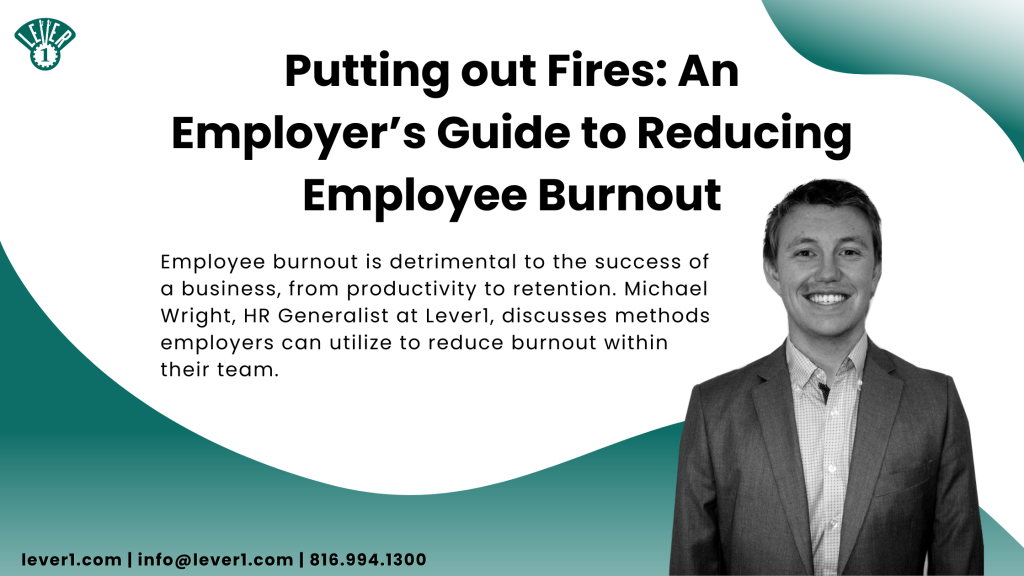
Employee burnout continues to negatively affect the workplace. According to SHRM’s The State of Global Workplace Culture in 2024 report, over 30% of employees reported being burned out last year. This number is even higher among younger generations and those who have spent less than 5 years at the company. Burnout stems from issues within the organization, such as unrealistic expectations and workloads, leadership pitfalls, and lack of growth opportunities for employees. Employee burnout leads to poor productivity, absenteeism, and retention issues. As a leader, you can implement cultural changes to reduce burnout within your organization.
The first step to combatting burnout is to assess the workload of your team. Are you setting a realistic expectation of output and providing the proper resources to ensure it can be met? If your team is overwhelmed, it may be necessary to consider prioritizing certain projects, automating tasks, or increasing your headcount. If growing your team is not an option, it is vital to find other ways to retain your key employees.
Employee appreciation goes further than you might think. While you may not always be able to reduce an employee’s workload, you can acknowledge their contributions to the success of the organization. Recognition for your employees’ hard work can boost effectiveness by 23% and increase productivity by 43%, according to HAAS Business School research. When employees feel appreciated, they often feel more adaptable and mentally equipped in the workplace, giving them the confidence needed to thrive. Recognition can be given informally, such as calling out employee’s successes in meetings, formally through performance evaluations, or through monetary methods, such as bonuses or merit increases.
While appreciation can be powerful, burnout is best avoided through proactive measures, as reactive steps may come too late. Offering comprehensive benefits is extremely impactful on employees’ mental well-being. Employee Assistance Programs (EAPs) provide mental health resources, such as counseling, which can help supplement existing medical benefits. Other benefits could also include wellness programs, such as paid gym memberships, yoga classes, or offering healthy snacks, which makes wellness much more accessible. Employers can also consider offering mental health days as part of a PTO policy, so employees don’t have to decide between utilizing sick days for their physical or mental health.
Another method to reduce burnout is offering employees flexibility. Many companies are opting towards returning to the office full time; however, it may be beneficial to evaluate if retaining flexible work options would be practical for your business. Providing this flexibility can improve work-life balance, lowering the risk of burnout.
A unique approach to reducing burnout is by cultivating workplace friendships. According to a survey done by KPMG, over 80% of employees felt that friendships at work made them feel more engaged and satisfied at work. Leaders and managers can foster friendships by dedicating time for connection, such as companywide breaks for volunteering or celebrating holidays, wins, or milestones. Also, use reoccurring meetings for more collaborative work, creating space for connections to form.
Employee burnout is a persistent issue that actively affects business owners daily. Solving the problem of burnout starts with empathetic leadership, flexibility, and proactive mental health support. By creating a culture that sets realistic goals, offers resources for support, and prioritizes well-being, organizations can reduce burnout and help employees reach their full potential. Lever1’s HR experts are here to help you create policies and offer superior benefits to cultivate a positive environment for your team.
Michael Wright, SHRM-CP | HR Generalist
At Lever1, Michael serves on a team that champions organizational efficiency through innovative training and development strategies. His passion for leadership and human resources has fostered a collaborative environment where talent thrives. Michael is committed to ensuring a positive and productive organizational culture for our clients.

